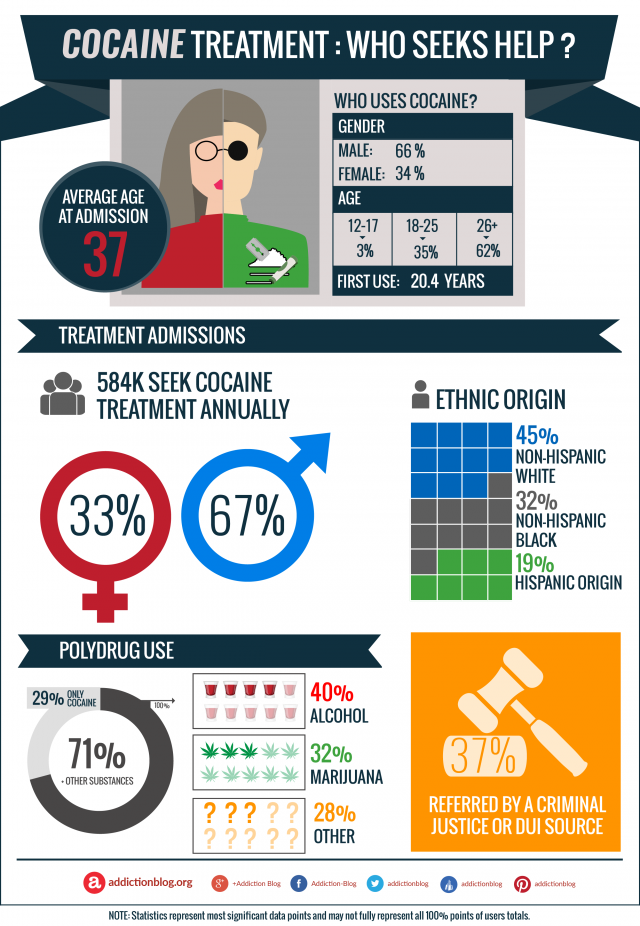Who has a cocaine problem?
According to a NSDUH (National Survey on Drug Use and Health) report in 2014, about 913,000 Americans met the DSM of Mental Disorders criteria for dependence or abuse of cocaine (in any form) in the past 12 months.
There are some signs and symptoms of cocaine addiction that you can recognize in yourself or in someone close to you. They can be the sign you are looking for to seek help. Some of the clinical criteria listed in the DSM, include:

1) Tolerance to cocaine. When you become tolerant to cocaine, you require higher doses to experience the original drug effect.
2) Cocaine withdrawal symptoms. Cocaine withdrawal is your body’s response to the absence of cocaine in your system once you’ve become dependent on cocaine. Symptoms occur following cessation of chronic cocaine use.
3) Dosage increase. Cocaine addicts take the drug in larger amounts or over a longer period of time than originally intended.
4) Loss of control over use. When addicted to cocaine, you feel the desire to cut down or control drug abuse, but will usually fail to do so.
5) Obsessive thinking about cocaine. The majority of a cocaine addict’s time is spent thinking about and trying to obtain cocaine.
5) Changes in life priorities. Obtaining and using cocaine is No.1 on the list of life priorities when you cannot control the urges to use anymore. Past social, occupational and recreational activities tend to be abandoned.
6) Continued use despite awareness of possible risks and dangers. Addicts will continue to use cocaine regardless of awareness of the harm, long term side effects, and dangers that they face OR expose their loved ones to.
How many people need help for cocaine use?
According to a NSDUH (National Survey on Drug Use and Health), 584.000 people sought treatment for a cocaine problem within the past year on a national level. The average age at admission was 37 years old.
Out of the individuals who sought and received addiction treatment for cocaine:
– 45% non-Hispanic White
- Peak age among non-Hispanic White male admissions was 32 years old
- Peak age among non-Hispanic White female admissions was mid 30’s
– 32% non-Hispanic Blacks
- Peak age among non-Hispanic Black male admissions was 46 years old
- Peak age among non-Hispanic Black female admissions was mid 30’s
– 19% Hispanic origin
Need treatment for cocaine addiction?
Behavioral therapy can be used and has been proven as successful for the treatment of cocaine addiction. Examples of behavioral therapies, include:
- cognitive-behavioral therapy
- contingency management, or motivational incentives
- therapeutic communities (drug-free residences, halfway houses, sober living homes, etc.)
You can speak with your primary care physician or family doctor, a school counselor, your psychologist, or licensed psychiatrist for referral to a cocaine addiction treatment program. You can also seek help, here:
- Call SAMHSA’s National Helpline on 1-800-662-HELP (4357) OR 1-800-487-4889 (TDD)
- Find a Treatment Facility Near You using SAMHSA’S Treatment Locator
- Support groups such as: 12 step programs, SMART Recovery, Life Ring, Cocaine Anonymous, etc.
Cocaine addiction treatment questions
Do you have any questions? We welcome you to post them in the comments section at the bottom of the page. We do our best to provide a personal and prompt response to all legitimate inquiries. In case we don’t know the answer to your particular question, we will gladly refer you to professionals who can help.








Related Posts